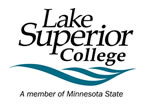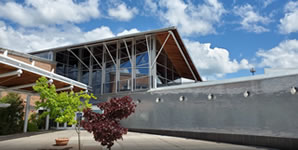Part 1: Purpose
To ensure acquired products, resources, and services are responsibly utilized from acquisition to end of service. Lake Superior College (LSC) will promote economic, ethical, environmental, and social considerations in all resource utilization decisions by incorporating efficient use of water, energy, and other natural resources in all college operations.
Part 2: Definitions
Subpart A: Waste Prevention. Refers to actions or choices that prevent the generation of waste.
Subpart B: Integrated Pest Management. The U.S. Environmental Protection Agency (EPA) defines “Integrated Pest Management (IPM) as an effective and environmentally sensitive approach to pest management that relies on a combination of common-sense practices…and, is used to manage pest damage by the most economical means and with the least possible hazard to people, property, and the environment.”
Subpart C: Life Cycle Cost Consideration. Life cycle cost takes into account the sum of all costs of a product including but not limited to: ecological cost of development, initial purchase price, installation, service, general operation, maintenance, potential upgrades, disposal, and potential residual value. This total cost may not be directly quantifiable, but these factors should be considered in all purchasing decisions when feasible.
Part 3: Responsibility. It is the responsibility of each individual at LSC to utilize campus resources efficiently relative to intended use and initiate/adhere to environmental waste prevention practices where appropriate in his/her respective work area.
Part 4: Guiding Principles
The following applicable Guiding Principles, designed by the EPA, shall be used in decision making related to efficient use of water, energy, and other resources:
- Guiding Principle 1: Pollution Prevention
- Consideration of environmental preferability should begin early in the acquisition process and be rooted in the ethic of pollution prevention, which strives to eliminate or reduce up-front, potential risks to human health and the environment.
- Guiding Principle 2: Life Cycle Perspective/Multiple Attributes
- A product or service’s environmental preferability is a function of multiple attributes from a life cycle perspective.
- Guiding Principle 3: Comparison of Environmental Impacts
- Determining environmental preferability might involve comparing environmental impacts. In comparing environmental impacts, Federal agencies should consider: the reversibility and geographic scale of the environmental impacts, the degree of difference among competing products or services, and the overriding importance of protecting human health.
- Guiding Principle 4: Environmental Performance Information
- Comprehensive, accurate, and meaningful information about the environmental performance of products or services is necessary in order to determine environmental preferability.
Refer to EPA’s Final Guidance on Environmentally Preferable Purchasing or contact the Sustainability Council for assistance in life cycle or cost comparison of products.
Part 5: Guidelines
Subpart A: General
- Continued use and expansion of post-consumer recycling and compost programs
- Continued waste prevention practices, including re-use of supplies and furniture
- Consider repair-ability and life cycle cost of products prior to purchase or accepting donation
- Consider carpools for events or meetings that require travel
Subpart B: Paper and Printing
- Default double-sided printing where possible
- Large jobs or multiple copies sent to Copy Center for printing when practical
Subpart C: Building Facilities and Furniture
- Minimize electricity use by turning off some or all lights when areas are not in use, not relying on photo-eye
- Utilize natural light where possible, including Solatubes® in the H building
- Eliminate use of individual small appliances where alternatives exist
- Replace inefficient space heaters with safer and more efficient alternatives
- Continually monitor and update automatic lighting timers, indoors and outdoors
- Zone classes during off-peak hours to allow shut down of underutilized spaces
Subpart D: Landscaping and Grounds Keeping
- Build no-mow landscapes into campus landscape plan
- Ongoing education for the campus community and training for responsible parties related to Campus Landscape Plan, including purpose of alternative planting
- No-mow in continuously wet and hazardous mowing areas, seek alternative vegetation options
- Maintain rain gardens as a storm water management tool
- Utilize Integrated Pest Management
- Native landscape species used where appropriate with regular maintenance as necessary
Subpart E: Appliances and Electronics
- Default energy saving settings on computers and employee education related to this
- Evening and weekend computer shut-down
- Explore technology to streamline energy saving processes, specifically in labs with multiple computers
- Employee education/reminders related to these practices
- Restrict personal printers and small appliances where shared option exists
Subpart F: Food Service
- Compost pre-consumer food scraps generated from campus food service
Subpart G: Donations
- Consider life cycle cost: including installation, supplies, maintenance
- Consider storage needs
- Consider costs associated with disposal
Subpart H: Vending Machines
- Consider cost of energy and loss of food service revenue prior to installation
- Encourage vending and snack misers on all vending machines
Subpart E: Vendors and Service Providers. These guidelines also should be considered in contracted business with vendors and service providers.
Part 6: Reference Statute
- Minnesota Statute 115A, Waste Management
- Minnesota Statute 16C.0725, Purchase of Recycled, Repairable, & Durable Materials
- Minnesota Statute 16C.073, Purchase and Use of Paper Stock; Printing
- Minnesota Statute 115D, Toxic Pollution Prevention
- Minnesota Statute 116D, Environmental Policy
- Executive Order 99-4
- Western Lake Superior Sanitary District Solid Waste Ordinance
Date Implemented: August 6, 2015


